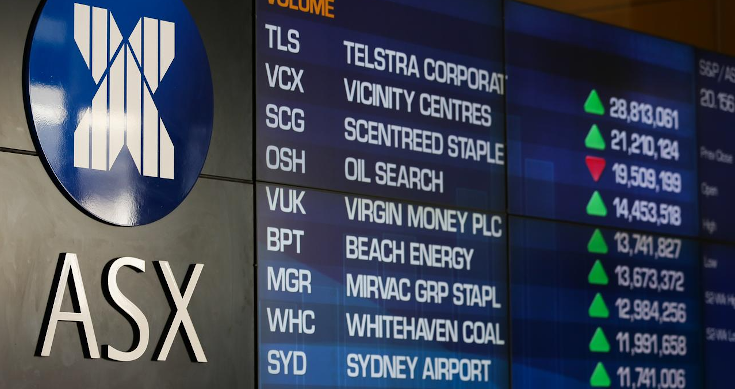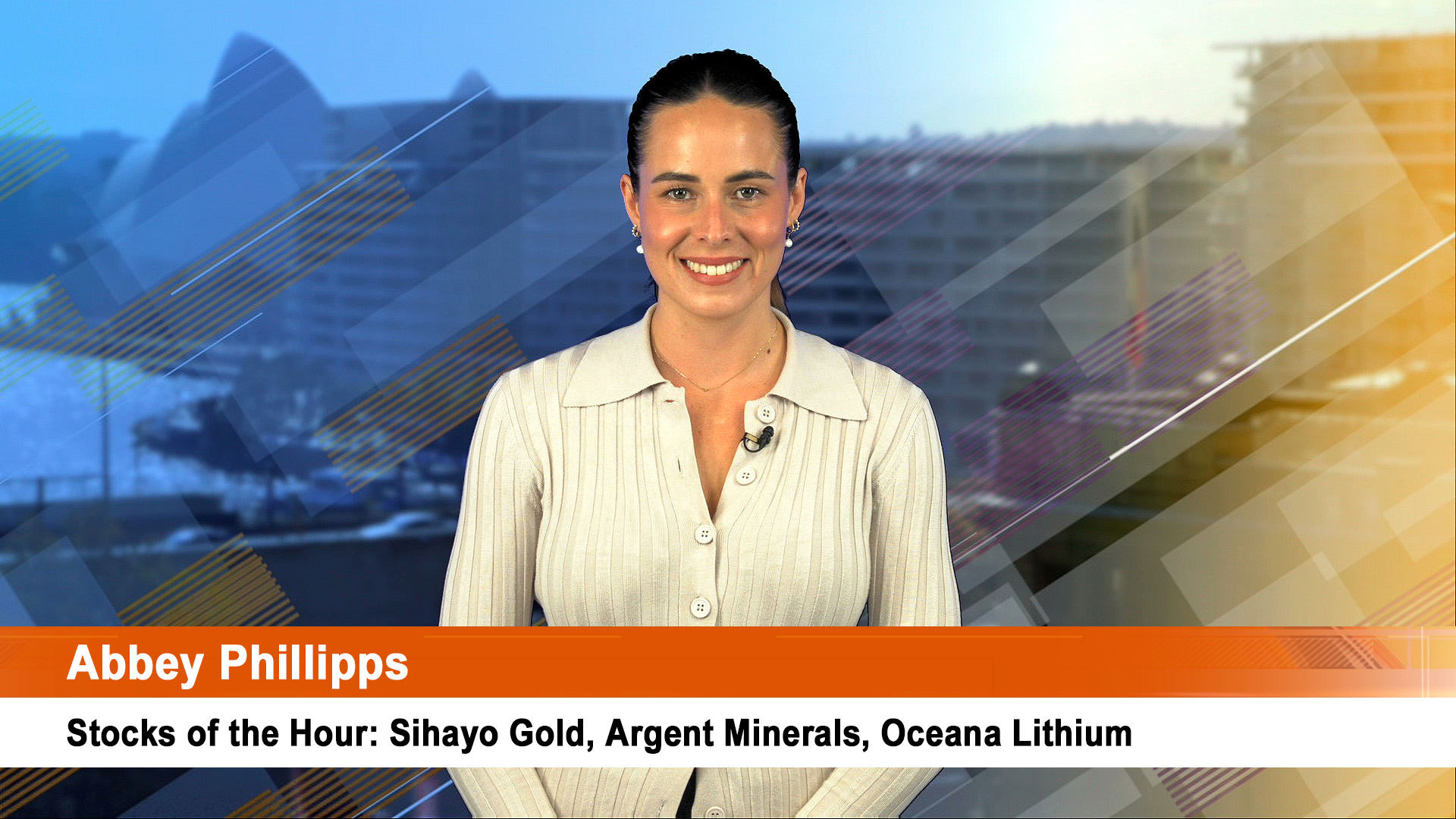by Paul Sanger
The ASX opened up over 1 per cent, taking its lead from a strong Wall Street overnight. Lithium stocks continue their bull run.
Lake Resources (ASX:LKE) is up 12.5 per cent , Core Lithium (ASX:CXO) is up 4.5 per cent , Liontown Resources (ASX:LTR) is up 4.07 per cent, Ioneer (ASX:INR) is up 2.92 per cent, Sayona Mining (ASX:SYA) is up 9.43 per cent, Pilbara Minerals (ASX:PLS) is up 4.7 per cent, Vulcan Resources (ASX:VUL) is up 8.1 per cent and European metals ( ASX:EMH) is up 3.85 per cent.
At noon, the S&P/ASX 200 is 0.85 per cent or 59.40 points higher at 7052.10.
The SPI futures are pointing to a rise of 76 points.
Asia-Pacific markets climbed on Thursday after a better-than-expected inflation report in the US sent stocks spiralling higher. The Kospi in South Korea is 1.32 per cent higher and the Kosdaq has jumped 1.31 per cent. Hong Kong’s Hang Seng index has advanced 1.19 per cent, with the Hang Seng Tech index rising 1.66 per cent. Mainland China markets also ticked up. The Shanghai Composite has gained 0.34 per cent and the Shenzhen Component has climbed 0.39 per cent. MSCI’s broadest index of Asia-Pacific shares outside of Japan has increased 1.04 per cent.
Japan’s market is closed for a holiday today.
PBOC’s policy statement for Q2 said economic stability remains the top priority and reaffirmed its policy stance as “flexible and appropriate”, also repeating its aim to strengthen the implementation of prudent monetary policy and fully utilise the tool kit. Caution against flooding the system with excess liquidity was retained. It was noted that against the backdrop of slowing global growth, elevated inflation and geopolitical conflicts, the recovery foundation still needs to be consolidated. The possibility of rising structural inflationary pressure was also flagged. They added they will closely monitor inflation developments at home and abroad, while also watching developments in major developed economies and spillover effects from monetary policy adjustments, in the context of market mechanisms. There is nothing new on FX policy, and a commitment to deepen market-oriented reforms and enhance yuan flexibility was repeated.
US equities finished notably higher in Wednesday trading on the back of a cooler July inflation print. Stocks rose sharply on Wednesday after a key inflation reading showed a better-than-expected slowdown for rising prices.
The headline consumer price index for July rose 8.5 per cent year over year, and was flat compared to June. Economists surveyed by Dow Jones were expecting increases of 8.7 per cent and 0.2 per cent, respectively. The Federal Reserve will weigh the report, along with other key economic data, ahead of its September meeting where it is slated to hike interest rates again.
Overnight the Dow Jones Industrial Average gained 1.63 per cent, and the S&P 500 gained 2.13 per cent, its highest level since early May. The Nasdaq Composite rose 2.89 per cent.
Major tech stocks outpaced the broader market on Wednesday, with Facebook-parent Meta rising 5.8 per cent and Netflix gaining more than 6 per cent. The Nasdaq has now moved out of bear market territory following 108 days in a bear market.
Shares of Disney surged more than 5 per cent after hours when the company reported earnings that beat Wall Street estimates on both the top and bottom lines, with strong spending at theme parks. In addition, total subscriptions to Disney+ rose to 152.1 million during the quarter, higher than the forecast estimate of 147 million.
Across the sectors, defensive industries underperformed, but still ended higher. Autos, semis, credit cards, homebuilders, road/rail, asset managers, chemicals, banks, airlines were among the standouts.
Headline-wise, Musk sold another $7B of Tesla stock in case he is forced to buy Twitter.
President Biden signed the Chips Act this week, kicking into gear one of the federal government’s largest investments in American industrial capacity. The bipartisan law will provide $52 billion in subsidies to chipmakers in the hopes they’ll build their massive foundries in the States rather than overseas, as well as pour more funding into R&D of high-tech industries. Right on cue, Micron said it’ll spend $40 billion on chipmaking factories in the US by 2030.
Behind the strong overnight numbers is an easing in supply chain constraints. The average cost of taking a standard 40-foot metal box across the world’s oceans is down by about 45 per cent from its peak.
Delivery times are easing across the globe. And the number of vessels queueing outside the port of Los Angeles has dropped 75 per cent from the start of the year despite the port recording its busiest June in a century. The global supply chain pressure index, set up by the Federal Reserve Bank of New York, is down 57 per cent in July from its peak.
Of course, the trend may reflect weakening demand for goods, as high inflation — which was, in part, owing to the surge in the cost of shipping and materials over 2021 — dents purchasing power. Whilst the easing of supply constraints is a step in the right direction, in the background the road to pre-pandemic supply chain levels may take years to return to normal.
Either way, the battle between inflation and the purchasing demands of the global consumer is now a dominant factor that is playing out in the global supply chain.
Best and worst performers
The best-performing sector is Communication Services, up 1.99 per cent. The worst-performing sector is Utilities, down 1.88 per cent.
The best-performing stock in the S&P/ASX 200 is Lake Resources (ASX:LKE), trading 13.26 per cent higher at $1.50. It is followed by shares in City Chic Collective (ASX:CCX)and Novonix (ASX:NVX).
The worst-performing stock in the S&P/ASX 200 is Rio Tinto (ASX:RIO), trading 2.90 per cent lower at $96.30. It is followed by shares in Computershare (ASX:CPU) and APA Group (ASX:APA).
Company news
Chrysos Corporation (ASX:C79) today announced it has signed ten new PhotonAssay lease agreements with existing customer Britannia Mining Solutions. This brings the total number of deployed, contractually-committed units to 48, up from the previous total of 38 units. The combined initial five-year terms of the ten new BMS lease agreements increased Chrysos’ Total Contract Value by $149m to $705m. Shares in C79 are currently trading up 1.61 per cent at $3.78.
Empire Energy (ASX:EEG) today provided shareholders with an update regarding the ongoing flow testing of the Carpentaria well in Empire’s 100 per cent owned and operated tenement, located in the Northern Territory’s Beetaloo Sub-basin. Empire MD Alex Underwood commented, “This is an outstanding result for Empire and our shareholders, and a historic moment in the advancement of the Beetaloo Basin. To our knowledge, this is the highest sustained gas flow rate of any well drilled in the Beetaloo Basin to date.” Shares in EEG are currently trading up 12.5 per cent at 27 cents.
Red River Resources (ASX: RVR) is pleased to announce results from five holes drilled at its Hillgrove Gold Mine in New South Wales, returning encouraging high-grade gold intercepts within broader mineralised zones at the Eleanora-Garibaldi deposit. Red River’s Board is currently completing a strategic review of Hillgrove before re-commencing mining. Shares in RVR are currently trading up 5.84 per cent at 14.5 cents.
TMK Energy (ASX:TMK) today announced that it has signed a Binding Memorandum of Understanding with a wholly owned subsidiary of PetroChina. The signing ceremony was held at TMK’s offices after a period of due diligence during which PetroChina representatives reviewed the existing data and recommended that they proceed to sign an MOU to formalise the growing relationship. Shares in TMK are currently trading up 20 per cent at 1.2 cents.
AMP (ASX:AMP) has flagged a large capital return as the result of a strong capital position due to asset sales, and an improved net interest margin, while announcing a sharp fall in 1H net profit as NIM fell due to competitive mortgage pricing and a higher cost to income ratio. 1H NPAT has fallen 45 per cent on-year to $46m as NIM has fallen 39bp to 1.32 per cent. 1H underlying NPAT has fallen 15 per cent to $117m. AMP won’t pay an interim dividend, but will start a $350m share buyback immediately. It also plans a further $750m in capital returns, including a combination of special dividend or further on-market share buyback. The total capital return of $1.1bn planned through FY23 equates to a massive 29 per cent of AMP’s current market capitalisation of $3.8bn and should boost the share price. Shares in AMP are currently down 0.86 per cent at $1.155.
Telstra (TLS:ASX) has lifted its dividend for the first time in seven years, raising its ordinary payout from 10c to 13.5 cents per share and returning $1.9bn to shareholders despite posting a drop in profits, total income and earnings per share. In its full-year results — the last under outgoing chief executive Andy Penn — the telco giant posted a net profit after tax of $1.8bn, down 4.6 per cent year-on-year, while total income was down 4.7 per cent, EBITDA down 5 per cent and earnings per share of 14.4 cents down 7.7 per cent. Despite the widespread hit to its numbers, the company will pay a fully-franked dividend of 8.5 cents per share on 22 September, bringing the total final dividend to 16.5 cents per share. “This represents the first increase in the total Telstra dividend since 2015 and recognises the confidence of the board following the success of our T22 strategy, the ambition in our T25 strategy of high-teens EPS growth from FY21 – FY25, the strength of our balance sheet and the recognition by the board of the importance of the dividend to shareholders,” CEO Andy Penn said. Shares in TLS are currently trading up 0.50 per cent at $4.03.
QBE’s (ASX:QBE) headline 1H22 NPAT of $151m and interim dividend of 9 cents a share has beaten “heavily revised-down consensus” estimates of $123m and 7 cents respectively, says UBS analyst Scott Russell, who reiterates his Buy rating and $16.00 target on the insurer. An adverse reserve movement of $68m “appears to run contrary to majority of global peers”, while QBE’s adjusted combined operating ratio of 92.9 per cent “looks pedestrian” (0.4 percentage points on the prior corresponding period) “considering multi-year premium rate increases.” But though FY22 gross written premium guidance has lifted slightly to “around 10 per cent” from “high single digit”, it “appears conservative” and investment yields continue to track higher, annualising 2.8 per cent versus 2 per cent in 1Q22. “Going into the result we had reservations about this result given widespread headwinds and weak headline profits,” Mr Russell says. Shares are currently trading up 4.04 per cent at $12.63.
Commodities and the dollar
Gold is trading at US$1787.79 an ounce.
Iron ore is 0.4 per cent lower at US$108.40 a tonne.
Iron ore futures are pointing to a rise of 1.51 per cent.
One Australian dollar is buying 70.74 US cents.














